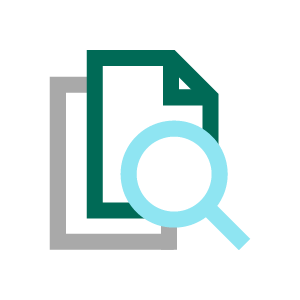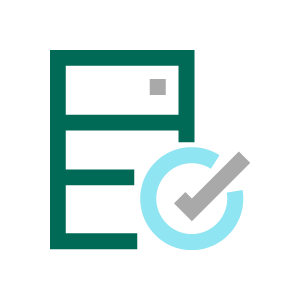What is Data Classification?
Data classification is the process of labeling data according to its type, sensitivity, and business value so that informed choices can be made about how it is managed, protected, and shared, both within and outside your organization.
Every day, businesses are creating more and more data. Data gets saved, employees move on, data is forgotten, and lost. Valuable information sits on your file servers and document stores, not protected and unrecoverable because no-one knows it exists, let alone where to find it.
By organizing data into categories, organizations have more control, making data easier to locate and retrieve, which is of particular importance when it comes to risk management, compliance, and data security.
Why Prioritize Data Classification?

Increasing regulation, legislation, and compliance – and the growing risk of data breaches – are some of the biggest challenges impacting the data security of organizations today. But all too often, data lacks context, users are bombarded with too many false positive alerts, and accidental breaches occur. At the same time, compliance regulations are making organizations more responsible for the protection of their data.
Today, data is prolific and good data governance is an ever-growing requirement, as is securing sensitive data against accidental and inadvertent loss, which could lead to a data breach. From the moment data is created, it becomes a liability. Data costs firms money to store and poses a risk if it inadvertently falls into the wrong hands.
Here at Fortra, we recognize the importance of protecting data and can provide a suite of data security solutions that help organizations regain control by identifying and classifying all the different data types, from public, to sensitive financial data and personally identifiable information (PII). We see data security as an ecosystem where classification is one of the core tenets and the foundation of any good security strategy.
Fortra's Data Classification Suite Corporate Overview
Identify, Classify and Protect What Matters to Your Business
How Data Classification Helps
Modern data classification solutions combine visual labelling with labels applied to the file’s metadata to protect and control use. These labels enhance the performance of third-party technology solutions to determine how a piece of data should be treated, handled, stored, and finally disposed of.
Data classification streamlines the load when it comes to handling data, as well as enhancing data security and compliance – making your investment in security applications work harder. Once data has been classified, organizations can confidently continue their data security journey.
Data classification benefits your business by:

Identifying and protecting data wherever it is located.

Aiding compliance with global data protection regulations including, but not limited to, GDPR, CCPA, HIPAA, CMMC, ITAR, and CUI.

Driving downstream data security solutions such as Secure Collaboration, Data Loss Prevention, Encryption, and more.

What are the four levels of data classification?
Depending on its level of sensitivity or value to the organization, the type of classification given to data determines a number of things, including who has access to that data and how long it should be retained. Typically, there should be four base levels when it comes to initially categorizing and labeling data:
Are 4 levels of classification enough?
While these base categories might offer a place to start in your data classification journey, it’s highly likely it won’t be where you end up. There are many reasons why normal business practices within organizations will typically require a greater level of depth to the way data is classified to conform with data security policy. For example:
Fortra’s Data Classification helps categorize, label, and protect your data
Fortra's Data Classification allows organizations to enhance their data security, deliver interactive training to users, and reduce business friction. Our solution is built to fit individual customer requirements. We’ll plan out and implement a solution relevant to your users and your business, helping you protect what really matters: Your data.
Data classification allows your users to assign a visual label to the data they create, so that informed decisions can be taken about how it is managed, protected and shared, both within and outside of your organization.

Data Categorization
Big data, data governance and data management – these are everyday challenges for all organizations today. Data categorization helps you identify the context as well as content of data, and critically extends classification beyond the security domain to ensure you a holistic view of data.
Big data, data governance and data management – these are everyday challenges for all organizations today. Data categorization helps you identify the context as well as content of data, and critically extends classification beyond the security domain to ensure you a holistic view of data.

Security Labeling
Sensitive data is important to identify, to ensure the right people have access to the right data. However, sensitivity is just one dimension of data classification. In order to get the full potential from data classification, and value from your data, you need to combine categorization with security labelling. Fortra has the unique data classification tools to show you how.
Sensitive data is important to identify, to ensure the right people have access to the right data. However, sensitivity is just one dimension of data classification. In order to get the full potential from data classification, and value from your data, you need to combine categorization with security labelling. Fortra has the unique data classification tools to show you how.

Data Protection
Classification turns visual labels into metadata, which can be used to both enforce your company’s security policies and drive other technologies, such as data loss prevention, secure collaboration, and archiving solutions.
The result is streamlined business processes with data security at the core, reducing risk and improving security culture.
Classification turns visual labels into metadata, which can be used to both enforce your company’s security policies and drive other technologies, such as data loss prevention, secure collaboration, and archiving solutions.
The result is streamlined business processes with data security at the core, reducing risk and improving security culture.
Our Solutions
Fortra’s data classification provides a flexible solution tailored to specifically fit the individual customer requirements or circumstance. Because a “one size fits all” approach doesn’t work for every individual organization, we will work with you to advise on current legislation such as CCPA, GDPR , and more, and what that means for your business. We’ll plan out and implement a solution relevant to your users and your business, helping you protect data, reduce business friction, and train employees on security best practices.
Fortra’s data classification solutions are built from the ground up, to comply with current and future needs. Our specialist tools have the capacity and flexibility to provide a comprehensive and user-friendly solution that works in line with your controls and business processes, and which will classify and protect your data in line with industry standards.
There are no limitations on the types of policies you can support using our data labelling and classification, and your business can leverage metadata across your data security ecosystem, adding accuracy to the data protection tools you already use. Once you know what your data is and where it is stored, you can then protect it according to its business value, giving you a stronger data protection posture AND competitive advantage.
Our best-of-breed data classification solutions enable organizations to effectively manage data, streamline operations and proactively respond to regulatory change.
Fortra's Data Classification Suite
Robust data classification, identification, and reporting - plus the option to deploy our SaaS products and add discovery for data at rest, mobile classification, and intelligent protection leveraging machine learning.
Fortra's Classifier Suite
Robust data classification within standard Office applications on both Windows and MacOS, as well as reporting - plus the option to add discovery for data at rest or mobile classification.
Award-Winning Data Protection

2024 Cybersecurity Excellence Award Winner
In recognition for our enterprise data and protection, Cybersecurity Insiders named Fortra the Cybersecurity Excellence 2024 winner for:
- Data Classification
- Data Leakage Protection (DLP)
- Data-Centric Security
Why Fortra
Fortra's acquisition of both Boldon James and Titus in 2020 created the deepest and widest pool of data classification expertise in the industry, making us the primary place for the specialist knowledge needed to identify, label and control your data. We have over 35 years of data classification experience, working across the entire spectrum of data sensitivity, so however important your data is, we have the capability to protect it.
Whether you are operating in a highly regulated industry or controlling data usage, securing your data against cyberattack or needing to ensure personal records do not end up in the wrong hands, Fortra has a solution that will fit with your business.
Classification Enhances Your Data Protection Strategy
Alongside data loss prevention, secure collaboration, managed file transfer, and other data security solutions, classification should be deployed to provide seamless protection for business-critical data from creation to destination.
How protected is your data?
Meet with one of our experts to assess your needs, and we'll walk you through our solution.